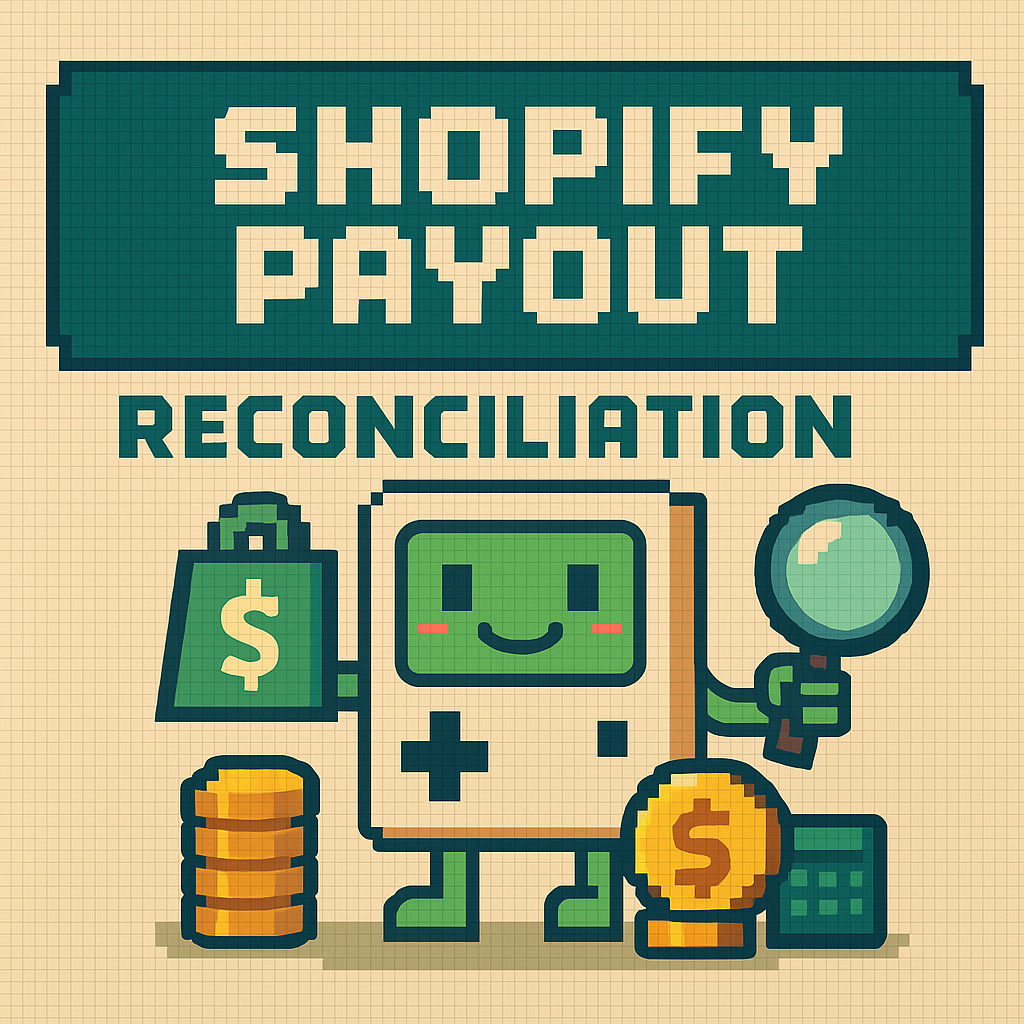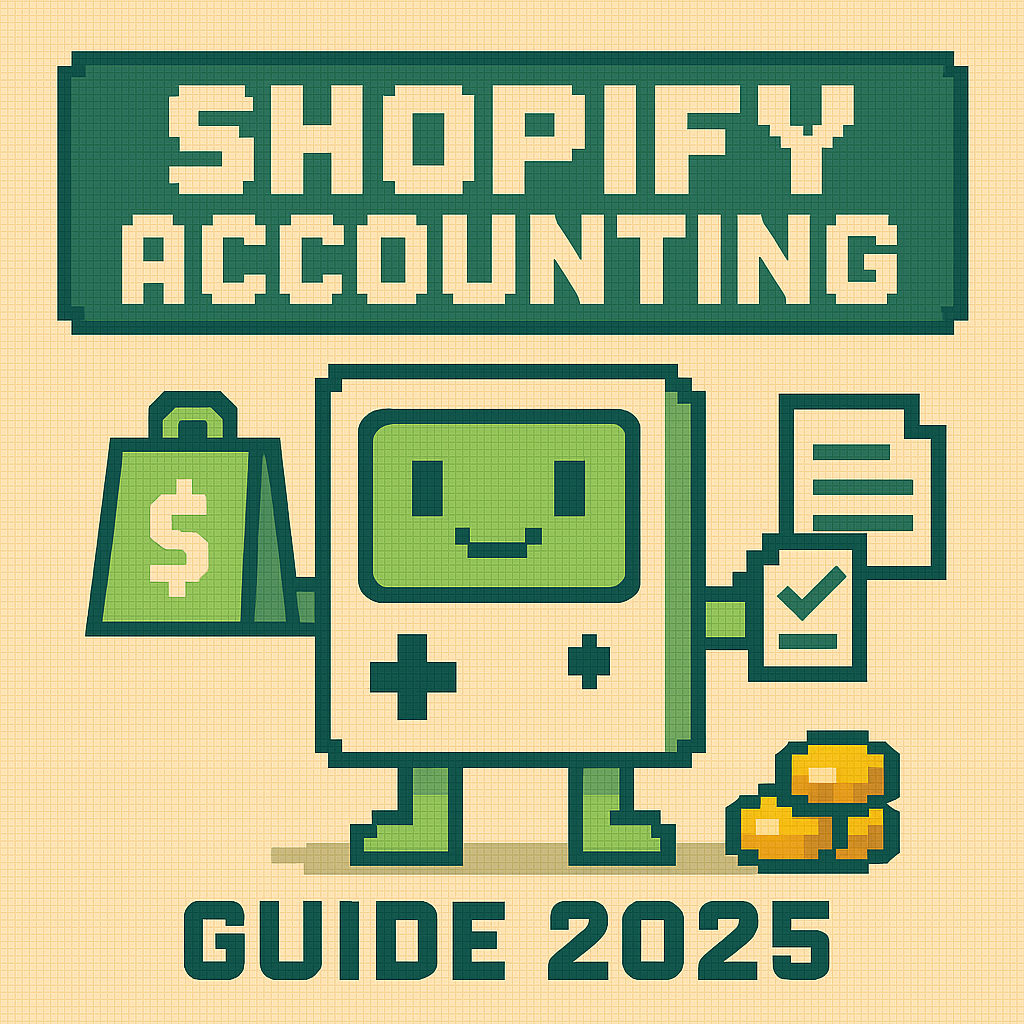Best Bookkeeping Tech Stack for Fast-Growth E-Commerce (2025)

Why Your Tech Stack Matters at the 7-Figure Mark
When your e-commerce store crosses the $1 million revenue threshold, bookkeeping transforms from a necessary evil into a strategic competitive advantage. The difference between brands that scale smoothly to 8-figures and those that hit operational walls often comes down to one thing: their financial infrastructure.
This guide breaks down the essential tech stack that powers the books behind fast-growth e-commerce brands, from the tools that automate your day-to-day reconciliations to the systems that provide real-time insights for strategic decisions.
When your store crosses the $1 million revenue threshold, bookkeeping stops being an afterthought and becomes a strategic asset. The moment you hit this milestone, everything changes:
- 10,000+ transactions/month across platforms - Multiple sales channels create reconciliation complexity
- Complex inventory & COGS calculations - You now carry meaningful stock and must capitalize landed costs correctly
- Multi-state sales tax compliance - Economic nexus rules trigger state filing requirements you can't ignore
- Investor-grade financial reporting demands - Banks, VCs, and acquirers demand GAAP-ready, audit-defensible financials
- Manual processes that don't scale - Spreadsheets and manual entry break down at volume
Bottom Line: A modern tech stack automates tedious reconciliations, surfaces real-time margins, and lets you invest time in growth instead of data entry.
The 2025 Tech Stack Blueprint
After working with 200+ e-commerce brands, we've identified the seven essential layers that form the backbone of modern financial operations. Each layer serves a specific purpose and integrates with the others to create a seamless, automated system.
Layer 1: General Ledger / ERP
Your financial system of record. Must be cloud-based with robust API support and multi-currency capabilities.
Leading Options: QuickBooks Online Advanced (most brands), Xero (international), Oracle NetSuite (enterprise $25M+)
Layer 2: E-Commerce Payout Reconciliation
Automatically summarizes orders, fees, returns, and taxes instead of posting thousands of individual transactions.
Leading Options: Bookkeep (best for Shopify/Amazon), A2X (multi-platform), Link My Books (budget option)
Layer 3: Inventory & COGS Management
Real-time stock valuation, landed cost allocation, and 3PL integration for accurate margins.
Leading Options: Cin7 Core (comprehensive), Katana (manufacturing), Extensiv (3PL focus)
Layer 4: Accounts Payable & Spend Management
OCR invoice capture, virtual cards, and automated approval workflows to eliminate manual bill processing.
Leading Options: Ramp (cards + AP), Bill.com (established), Airbase (enterprise)
Layer 5: Sales Tax & Compliance
Automated nexus monitoring, return filing, and marketplace facilitator logic for 50-state compliance.
Leading Options: Numeral (modern, ecom-focused), Avalara (enterprise), Zamp (emerging)
Layer 6: Payroll & HR
Multi-state tax handling, contractor 1099s, and expense reimbursements that sync directly to your GL.
Leading Options: Gusto (SMB), Rippling (scales well), Deel (global teams)
Layer 7: FP&A & Dashboards
Live dashboards, cohort analysis, inventory turns, and cash runway reporting for strategic decision-making.
Leading Options: Fathom (QBO native), ProfitWell (subscription focus), Custom BI (Looker/Tableau)
Our Recommended Starter Stack (Under $10M)
This combination covers 90% of your needs and costs under $750/month until you scale. It's the exact stack we deploy for most of our clients in the $1M-$10M range:
- ✓ QuickBooks Online Advanced
- ✓ Bookkeep
- ✓ Cin7 Core
- ✓ Ramp
- ✓ Numeral
- ✓ Gusto
- ✓ Fathom
Total monthly cost: ~$750/mo
When to Upgrade: Scaling Stack ($10M-$50M)
As you grow beyond $10M in revenue, consider these enterprise-grade replacements and additions:
| Replace/Add | Why Upgrade |
|---|---|
| NetSuite (replace QBO) | Multi-entity consolidation, native inventory, complex revenue recognition |
| Bill.com Enterprise | Bulk vendor payments, international wires, approval chains |
| Rippling (replace Gusto) | Consolidated HRIS, PEO, global payroll capabilities |
| BlackLine (add) | Advanced auto-reconciliations & flux analysis for audit readiness |
Implementation Roadmap
Pro Tip: Don't try to implement everything at once. We recommend 30-60 day implementation sprints to ensure each system is properly configured and your team is trained before moving to the next layer.
- Foundation & Cleanup (Weeks 1-4) - Clean up historical books, set up chart of accounts, establish GL foundation
- Payout Automation (Weeks 5-6) - Deploy Bookkeep or similar, configure bank feed rules, reconcile last 90 days
- Inventory System (Weeks 7-8) - Import products and historical data, configure COGS methods, integrate with 3PLs
- AP & Spend Controls (Weeks 9-10) - Set up virtual cards, approval workflows, migrate vendor relationships
- Tax Compliance (Weeks 11-12) - Configure sales tax engine, register in required states, set up automated filing
- Analytics & Reporting (Weeks 13-16) - Build dashboards, set up KPI tracking, establish monthly reporting cadence
Essential KPIs to Track
Once your stack is live, these are the metrics that matter most for scaling e-commerce brands:
- Contribution Margin - Revenue minus variable costs (COGS + fees)
- Inventory Turnover - How quickly you convert inventory to cash
- Cash Conversion Cycle - Days from cash out to cash in
- Days to Close - Target: ≤15 days for monthly books
- Sales Tax Liability - By state, updated monthly
- Finance Stack Cost - Keep under 1% of revenue
Common Pitfalls (And How to Avoid Them)
- ❌ Posting Every Individual Order - Creates thousands of GL entries. Use payout summarization instead with tools like Bookkeep.
- ❌ Manual Inventory Tracking - Breaks down after 50+ SKUs. Implement inventory software early with Cin7 Core or similar.
- ❌ Ignoring Sales Tax Until an Audit - Set up nexus monitoring at $500K revenue with Numeral, not after you get audited.
- ❌ Manual COGS Journal Entries - Error-prone and time-consuming. Automate through your inventory system integration.
The Bottom Line
Fast-growth e-commerce brands can't afford to run on spreadsheets and manual processes. The tech stack outlined above isn't just about saving time—it's about building the financial infrastructure that lets you scale from $1M to $50M and beyond with confidence.
Ready to implement this stack?
Ottit specializes in deploying this exact tech stack for e-commerce brands. We handle the implementation, historical cleanup, and ongoing management so you can focus on growing your business.
- ✓ Complete implementation in under 45 days
- ✓ Historical data cleanup and migration
- ✓ Training for your team
- ✓ Ongoing support and optimization
Book a free consultation to see how this stack would work for your specific business.





